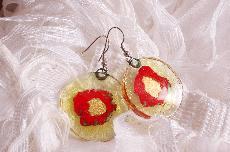
Philip Dail remembers the exact moment he saw them.
He opened the table-sized shipping box and grabbed handfuls of them.
Within minutes, students and other members of the N.C. State community crowded around Dail outside the College of Textiles and the multi-colored rectangular pieces of cloth in his arms.
The lambas were a hit.
“I remember the day he brought in the lambas. At first sight, we were like ‘wow thats a really nice piece,'” Ian Jester, a senior in textiles and the head sales associate at Beleza, said.
A Cause
Lambas are rectangular pieces of cloth, which can be used as shawls or sarongs, made from a silk found only in Madagascar. Dail first heard of the lambas from his former student and alumna Kylie Schmidt.
Schmidt was serving in the Peace Corps in Madagascar when a woman from the village asked her to help sell the lambas she made. Other woman also asked Schmidt to help them sell their lambas.
Schmidt knew she alone couldn’t help these women, so she turned to Dail to be an aide.
After hearing about the villagers and the lambas they create, Dail decided to visit Madagascar and see for himself.
“When I went to the village, I understood my young woman [Schmidt] had every right to be concerned,” Dail said.
Dail agreed to have the villagers ship lambas to him, which he would sell online and send the money back to them.
Dail said if he just gave them money, they would never utilize their talents and become stable.
“The whole saying behind this was, if you give a man a fish then he eats for one day; If you teach a man to fish, he eats for a lifetime,” Dail said.
Forming a Store
In December 2004, Dail flew to Brazil to visit Bradley Cummins, an alumnus, who was one of his students on an exchange program.
Dail and Cummins spent days traveling around by car, when Dail noticed a sign on the side of the street that read “Artesantos Textiles.”
The two words — graphic artists — caught Dail’s eye immediately. Dail and Cummins followed the sign through dirt streets until they came upon a vine-covered house. The two went in to meet a Nara Guichon, the graphic artist.
“Bradley wanted to go, but he locked his keys in the car,” Dail said. “Because of that, we got to know a lady named Nara Guichon.”
Dail and Cummins spent all night watching Guichon make clothes and talking.
When he returned to the States, Dail brought back 77 pieces of Guichon’s work, including brightly colored shawls, shirts and crocheted pieces of clothing in azure blue, bright green and white.
“This story is so amazing to me because it never was in my plan,” Dail said.
Dail said he knew with addition of Guichon’s pieces, he would need a store, but as a professor he was not “wealthy.”
“The cold, hard facts of life are if you want to help people, you got to have money, and I’m not independently wealthy,” Dail said.
For six months, he opened a small booth at Crabtree Valley Mall, but the pieces overwhelmed the tiny storage space. After some “business decisions” Dail decided he would open a store in Cameron Village. He called his fair-trade store Beleza, a Portuguese word for “a wowing beauty.”
“The only real way to sell the items was to have a store,” Amy Williams, the store manager, said.
The mission of the store Beleza, according to Williams, is to “be a marketplace for people in other countries.” Because Beleza is a fair-trade store it buys the good from the sellers and then sells the goods.
“People are being treated fairly, being paid what they ask for. We pay them upfront what they request,” Dail said.
The Store Now
Inside Beleza is jewelry, clothing and bags from other countries including crocodile handbags, fused-glass rings and necklaces, crocheted skirts and a rack full of lambas. The items come from different countries including Madagascar, Brazil and Peru. But, according to Jester, the lambas haven’t lost their popularity.
Guichon’s work also covers the table tops in Beleza. Dail said her work is well-received in Raleigh.
Beleza also hosts a designers’ corner, for student designers at NCSU to display their work. The corner consists mostly of hot pink, grass green, royal blue and other multi-color scarfs. Dail said he hopes to display clothing in the near future.
Although the store is rarely packed with customers, it, according to Jester and Dail, continues to strive to help people who do not have a market, but have the skills.
“Thats one of the challenges — to get people to know we are here; we are still trying to let people know we are here,” Williams said.
Any success thus far Jester attributes to the quality of the items and Dail’s hard work.
“He has put his whole heart into it,” Jester said.
Dail repeatedly said he loves the store, and he loves helping the villages.
“I tell my wife that we just keep getting poorer and poorer, but I feel richer and richer,” Dail said.